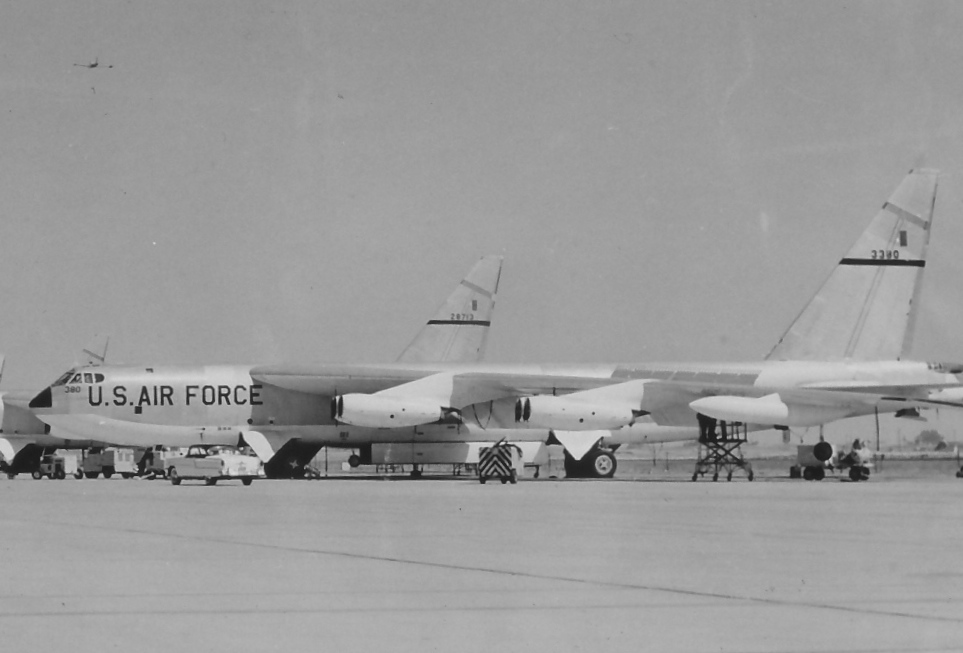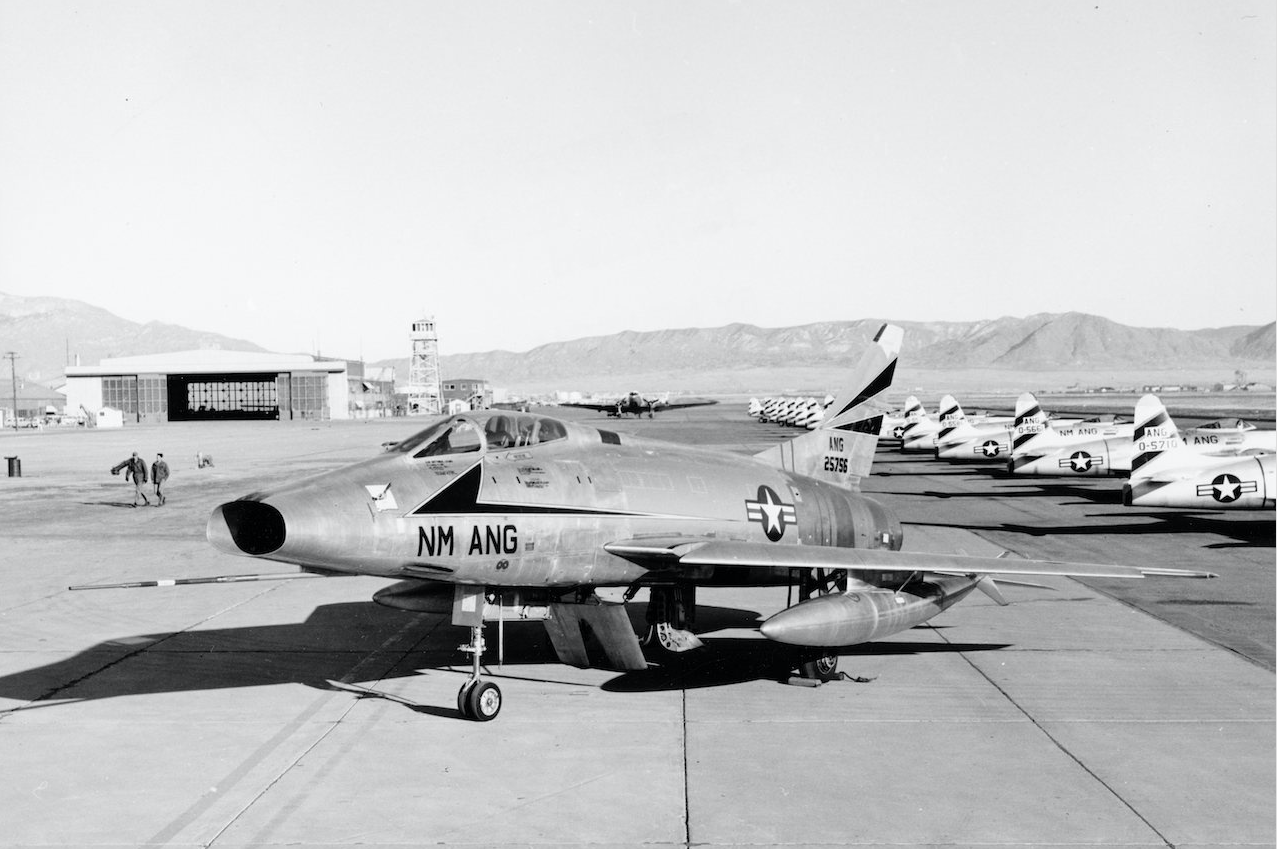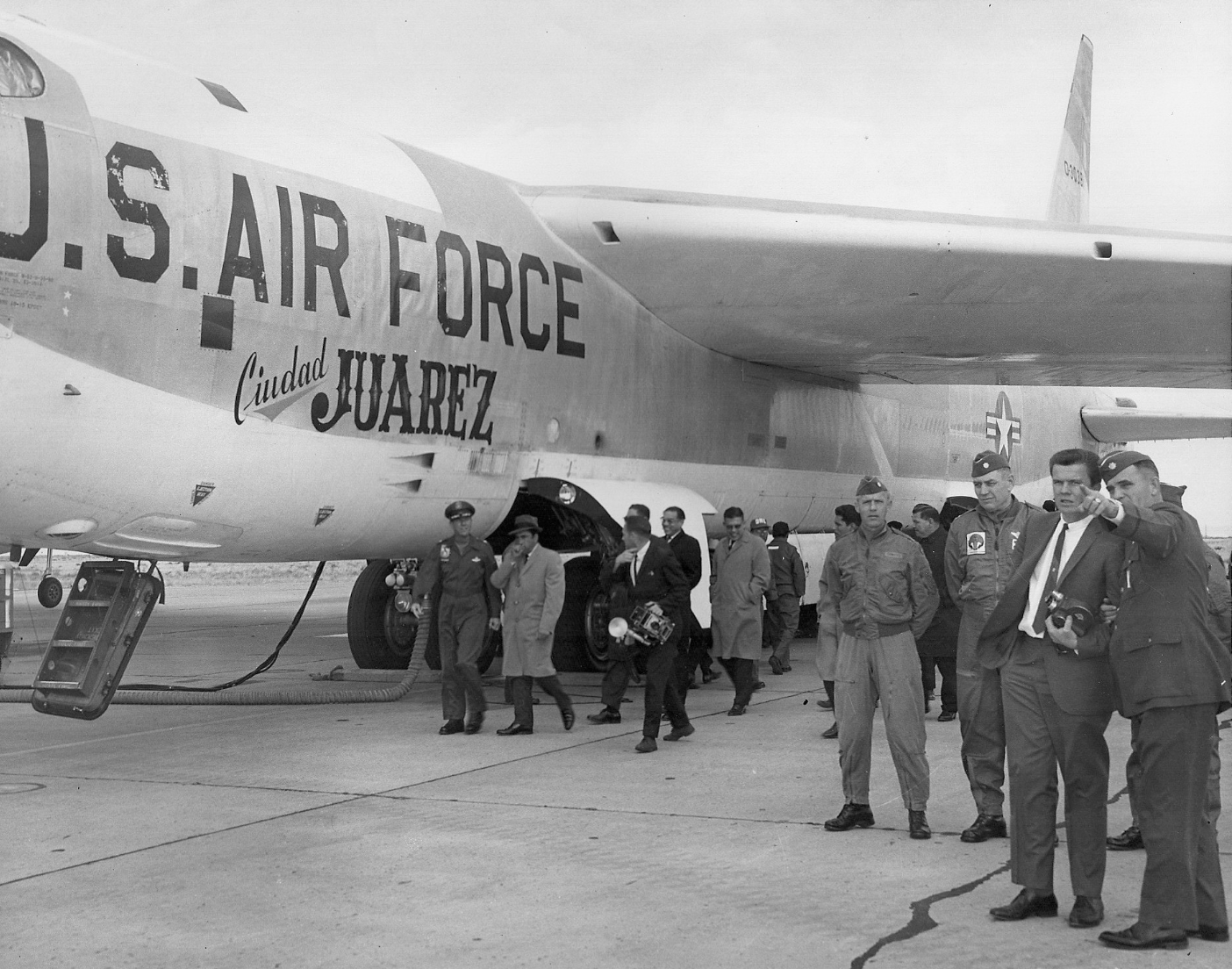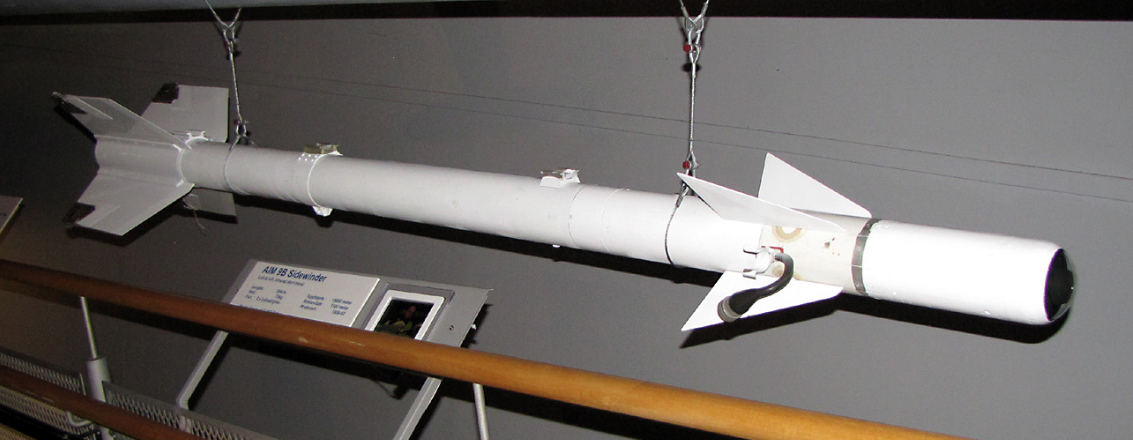
7 April 1961: Boeing B-52B-30-BO Stratofortress 53-380, assigned to the 95th Bombardment Wing and named Ciudad Juarez, departed Biggs Air Force Base, El Paso, Texas on a training mission. The aircraft commander was Captain Donald C. Blodgett.
The flight took Ciudad Juarez over New Mexico where they were intercepted by a flight of two North American F-100A Super Sabres of the New Mexico Air National Guard, also on a training flight.

Captain Dale Dodd and 1st Lieutenant James W. van Scyoc had departed Kirtland Air Force Base, Albuquerque, New Mexico. Each of their Super Sabres were armed with two GAR-8 Sidewinder air-to-air missiles (later redesignated AIM-9B Sidewinder). Their assignment was to practice ground-controlled intercepts of the B-52.
Each F-100 made five passes at the B-52, flying at 34,000 feet (10,363 meters) over central New Mexico. Their Sidewinder infrared-seeking sensors would lock on to the heat of the B-52’s engines and give an audible signal to the fighter pilot that the target had been acquired. Safety precautions required that a circuit breaker be pulled and a firing switch be left in the off position. Before each pass, ground controllers had the pilots verify that the missiles were safed.

As the training session came to an end, Lieutenant van Scyoc, flying F-100A-20-NA Super Sabre 53-1662, announced, “OK, Wing, one more run then we’ll go home.” The seeker heads of his Sidewinders locked on to the B-52, but then one of the missiles fired.
Van Scyoc radioed, “Look out! One of my missiles is loose!” Captain Blodgett heard the warning, but before he could begin evasive maneuvering, the Sidewinder impacted the inboard engine nacelle under the bomber’s left wing, blowing the wing completely off. The B-52 immediately rolled over and went into a spin. 52-380 disappeared into the clouds 10,000 feet (3,048 meters) below.
The co-pilot of Ciudad Juarez, Captain Ray C. Obel, immediately ejected. His ejection seat was thrown through a hatch opening in the cockpit ceiling. Because of the high altitude, this sudden opening in the fuselage resulted in explosive decompression. The crew chief, Staff Sergeant Manuel A. Mieras, had been standing on a crew ladder behind the pilots which led to the lower deck where the navigator and bombardier were located. Sergeant Mieras was sucked up through the hatch. His left leg was so badly injured that it later had to amputated.

Captain Blodgett was pinned against the cockpit side by the g forces of the rapidly spinning bomber. He later reported:
I heard van Scyoc call “Look out! My missile’s fired.” We were on autopilot and I grabbed the controls just as the missile hit. There was a tremendous shudder and the aircraft banked left steeply. Electrical equipment in the right side of the cockpit caught fire. My copilot ejected with the aircraft in a 90° bank and in all the confusion I didn’t realize he had gone. I tried to reach the alarm bell control between the two seats to order the crew to bail out, while holding the controls with my left hand to maintain full right aileron and rudder. I didn’t realize the wing had gone and the aircraft wasn’t responding at all; it began to spin down into the clouds and I still wasn’t sure that I had hit the alarm. Later, my crew chief said he had seen the red light flashing as he sat on the steps to the lower cabin. With g-forces building up tremendously, pinning me to my seat I could not raise my right hand from its position near the bail-out alarm but could move it sideways to the ejection handle. The hatch fired and the seat threw me up fifty feet with the B-52 at 600 knots. The slipstream tore off my helmet as I left the aircraft. There was another explosion and I went through a ball of fire — it felt like being in an oven. Immediately after that I went through a “bath” of JP-4 fuel as the fuel tanks had broken up in this second explosion. At least this put out the fire but now I was soaking wet with fuel and still on the ejection seat. Assuming a seat malfunction (they told me afterwards I was holding on to it) I reached out to unfasten the lap belt when suddenly I flew out of the seat. However, the inter-phone cord wrapped around my leg so now I was going down through the clouds with a 650 pound seat hooked to my leg. I thought it would rip my leg off and I managed to claw the cord free. By now I was falling in a cloud of debris — and a blizzard. I released my survival gear pack, which also automatically released the survival raft. This was suspended about 40 feet below me and, with all the updrafts in the clouds due to the bad weather it acted like a sail, pulling me round in a 180° arc. I thought, ‘If I hit the ground sideways, this is it!’ I couldn’t get to my knife to cut it free but I soon got out of the turbulence and began to fall straight.
When I ejected, my left arm hit the hatch putting a big gash in it. The blood was pouring out of this and I was holding this with my right hand, trying to stop the bleeding. Suddenly I saw something white and I hit the ground in a downswing of the parachute and a 30 knot wind. It felt like jumping off a two-story building. I hit so hard that everything in my survival kit: the radio, mirrors, etc., was broken apart from the survival rifle. My original intentions were to get the radio going and tell that fighter pilot what I thought of him. . . .
—Aviation Safety Network, https://aviation-safety.net/wikibase/wiki.php?id=48341
Ciudad Juarez impacted on Mount Taylor, an 11,305 foot (3,446 meter) stratovolcano northeast of Grants, New Mexico, and left a crater 75 feet (23 meters) deep. Captain Peter J. Gineris, navigator, Captain Stephen C. Carter, bombardier, and 1st Lieutenant Glenn V. Blair, electronic countermeasures, did not escape.
Captain Blodgett suffered a fractured pelvis, Captain Obel, a broken back. The tail gunner, Staff Sergeant Ray A. Singleton, was badly burned.
Sergeant Singleton located Captain Blodgett and they were both rescued by helicopter later that day. It would be two days before Captain Obel and Sergeant Mieras were located.
An investigation determined that moisture condensation inside a worn electrical plug had caused a short circuit which fired the Sidewinder. Lieutenant van Scyoc was completely exonerated of any blame for the accident.

The AIM-9B Sidewinder was the first production version of the Raytheon Sidewinder 1A. It was 9 feet, 3.5 inches (2.832 meters) long with a diameter of 5 inches (12.7 centimeters). The span of the fins was 1 foot, 10 inches (55.9 centimeters). The AIM-9B weighed 155 pounds (70.3 kilograms). The missile was powered by a Thiokol Mk. 17 rocket engine which produced 4,000 pounds of thrust for 2.2 seconds. It could achieve a speed of Mach 1.7 over its launch speed, or about Mach 2.5. The maximum range was 2.9 miles (4.82 kilometers). It carried a 10 pound (4.54 kilogram) blast fragmentation warhead with an infrared detonator. The lethal range was approximately 30 feet (9.1 meters).
The Sidewinder is named after a species of rattlesnake, Crotalus cerastes, a pit viper common in the southwest United States and northern Mexico. The snake uses a heat-sensing organ on top of its head to hunt.

© 2016, Bryan R. Swopes